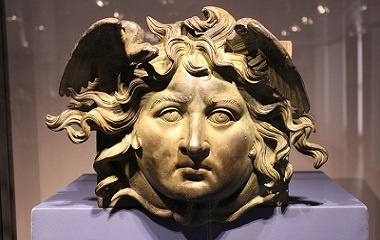Professor and T&W poet-in-residence Joanna Fuhrman explores Lorca, Simic, and Apollinaire in this poetry lesson. Using multiple model texts, Joanna provides students with a variety of points of view and approaches to creating an image in writing. This lesson allows students to compare literature across centuries before opening up their own imaginations and writing images of their own.
Lesson Overview
Download: Inside Poems
Common Core State Standards:
(Refer to English Language Arts Standards > Speaking and Listening > Grade 3, English Language Arts Standards > Speaking and Listening > Grade 4, English Language Arts Standards > Writing > Grade 3, and English Language Arts Standards > Writing > Grade 4)
- ELA-LITERACY.SL.3/4.1
Engage effectively in a range of collaborative discussions (one-on-one, in groups, and teacher-led) with diverse partners ongrade 3/4 topics and texts, building on others’ ideas and expressing their own clearly. - ELA-LITERACY.W.3/4.3
Write narratives to develop real or imagined experiences or events using effective technique, descriptive details, and clear event sequences.
Guiding Questions:
- What are the images used in these poems?
- What is the style of writing used?
- How can we emulate this style?

LESSON
Introduction:
When students arrive, show them the “third eye” sticker on teacher’s forehead. Explain that sometimes poets are able to see things other people don’t see. Give students their own “third eye” stickers.
Tell the students that with their third eye, they are poets and able to view things in their imaginations that most people can’t see.
Main Activity:
Read the poems “Capriccio”by Lorca and “Stone” by Simic. Have students pay special attention to the imagery.
What pictures do you see in your head when you read the poems? In “Capriccio,” what do you think the “weirdest” image is? What makes it unusual?
In “Stone,” what is outside the stone? What is inside? How are these poems similar? How are they different?
Have the students brainstorm a list of things that they can now “see into, under, or behind.” For example (these are from my students):
Inside the hamburger
Behind the flag
Inside the clock
Behind the blackboard
Under the bed
Inside the snowflake
Inside a dolphin
Write a collaborative class poem about one of these ideas. When writing the model poem on the board, ask the students to add action words to the lines. For example, if they say “inside the snowflake there is a little girl,” ask them to tell you what the little girl is doing or what she is saying. Ask the students what the space sounds like and smells like. You might ask them to describe what the sound or smell looks like. Here’s an example of a collaborative poem:
“The Snowflake”
Inside a snowflake,
flying white sheep
make snowflakes float.Water drips on blue water people
who say “How are you?”
and “Happy Birthday!”Inside the snowflake,
a frozen pool where
ice people skate.Inside the snowflake,
everyone laughs.
After writing the group poem, ask the students if they want to change the order of the lines.
Ask the students to pick one of the ideas from the brainstorm list or make up their own, and then write their own poem based on the model.
Scaffolding Questions for Writing:
Write these on board or distribute on a handout.
In your imaginary space:
- What does it look like?
- What does it sound like?
- What does it smell like?
- What does it taste like?
- Can you add movement to the picture you create with your words?
- What colors do you see?
- Do the objects inside/behind/under talk? What do they say?
Continuation:
Note: I taught this lesson in an elongated period, but this second phase could also be the focus for a second day.
Look at and discuss Apollinaire’s “Caligrammes.” Ask students to rewrite their poems in the shape of the objects they are going inside.
Closing: Share!
Materials:
Poem handout
Board to project Apollinaire’s “Caligrammes”
Vocabulary:
Third eye, capriccio, desiccated, unperturbed
Multi-Modal Approaches to Learning:
This lesson engages aural learners (listening to the poems read aloud); visual learners (having the poems on the handout, looking at Apollinaire’s poems, shaping one’s own poem); kinesthetic learners (writing poems with sensory detail); interpersonal learners (collaboratively writing a poem); and intrapersonal learners (independent writing and reflection).
Joanna Fuhrman is an Assistant Teaching Professor in Creative Writing at Rutgers University and the author of seven books of poetry, including To a New Era (Hanging Loose Press, 2021) and the forthcoming Data Mind (Curbstone/Northwestern University Press, 2024). Fuhrman's poems have appeared in Best American Poetry 2023, The Pushcart Prize anthology, The Academy of American Poets' Poem-a-Day, and The Slowdown podcast. She first published with Hanging Loose Press as a teenager and became a co-editor in 2022.




